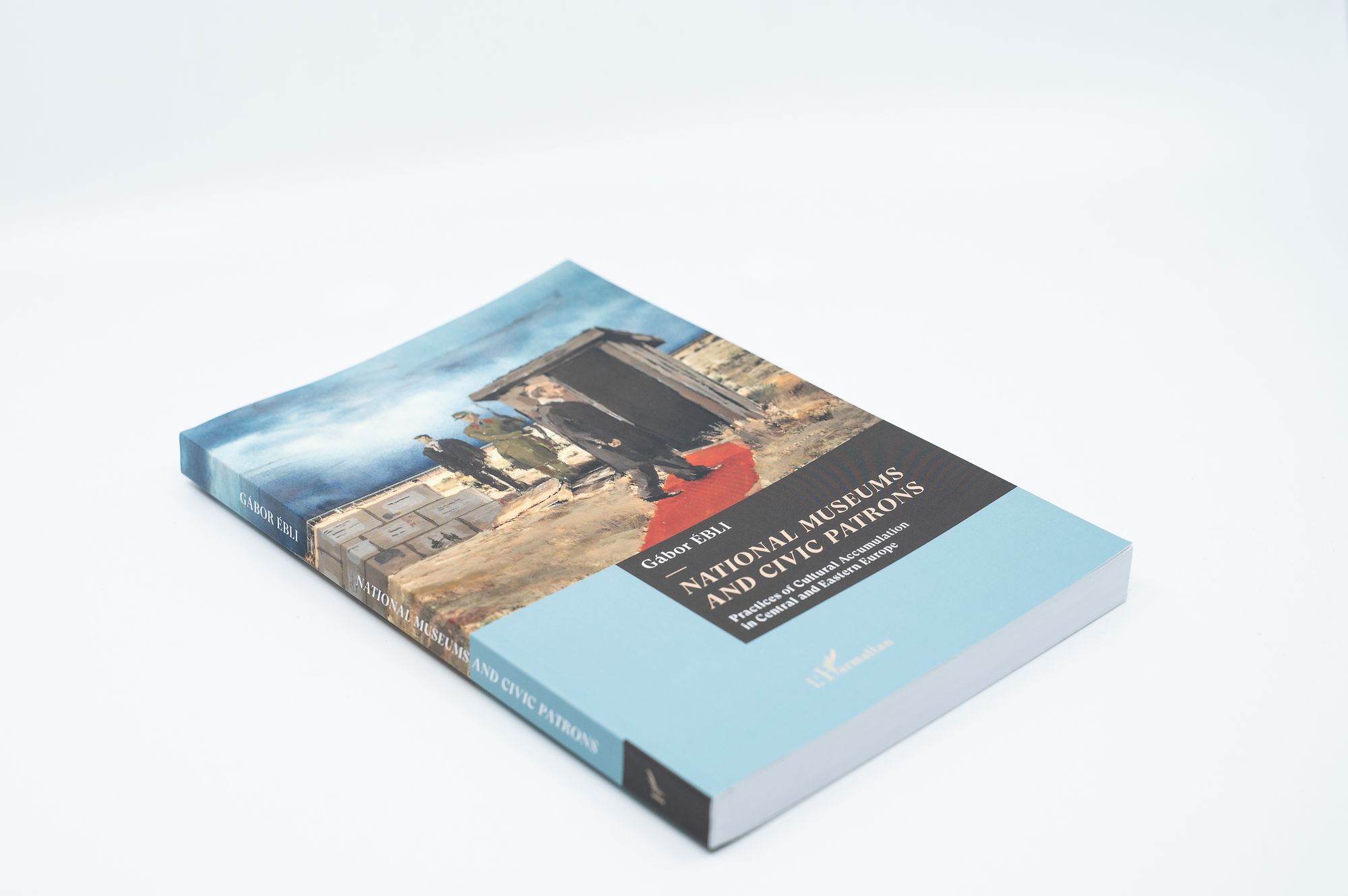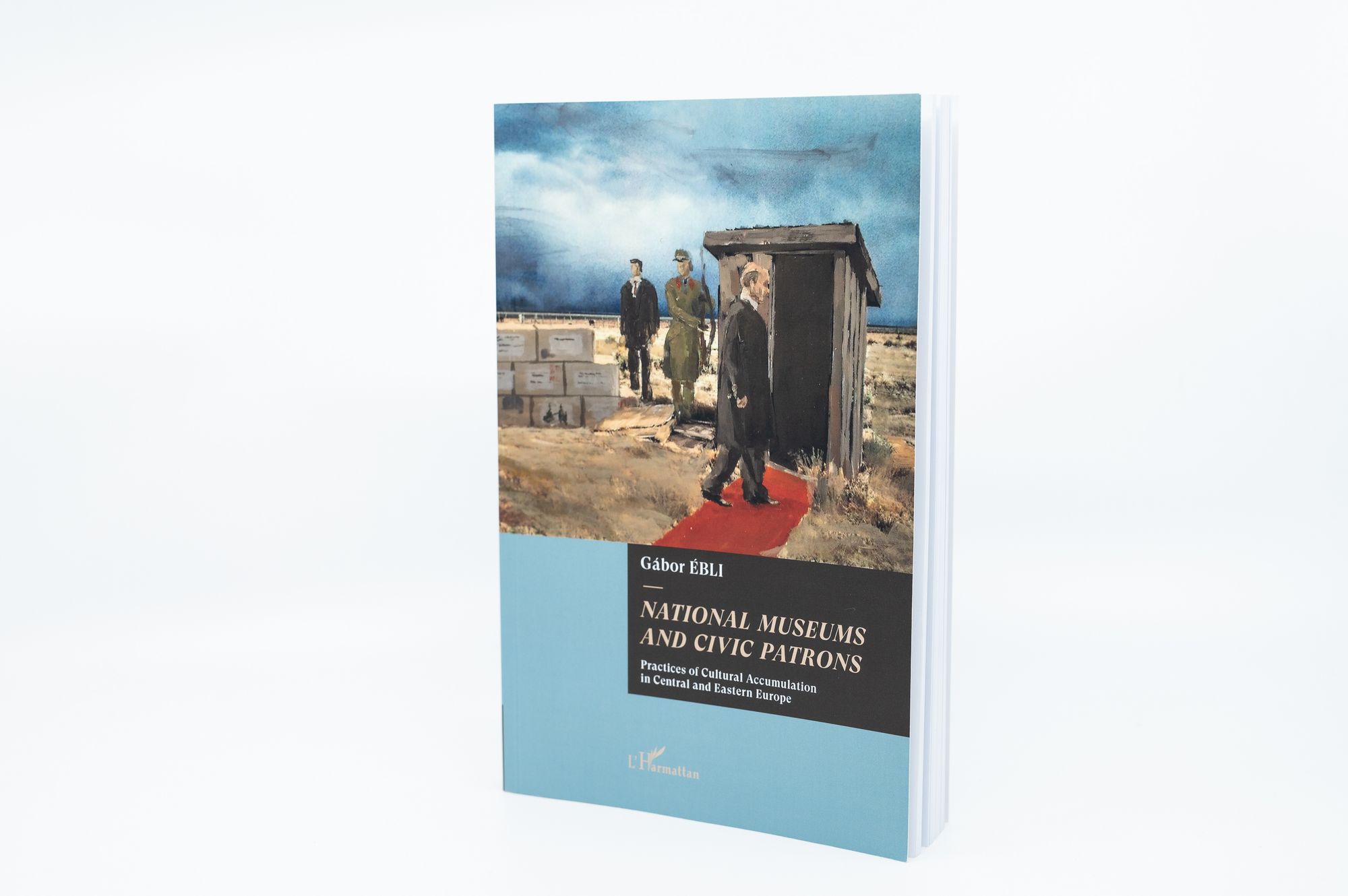Gábor Ébli’s book titled National Museums and Civic Patrons. Practices of Cultural Accumulation in Central and Eastern Europe, provides insight into the relationship between public and private collections within Central and Eastern Europe, summarized by a selection of forty of his writings. The aim of Ébli’s English-language book is to inform a wider audience in regard to the development of museums in the region, as well as the tendencies of the region opening its doors to contemporary art. We spoke to the author about his results of some 20 years of research.
When did interest in Eastern Europe begin to grow in the cultural sphere and why?
This process took place in several waves. At the time of the regime change, the possibility of gaining a glimpse behind the Iron Curtain was a cause of interest. This was followed by an extended period of sobering up, when it seemed like interest in the region had started to wane. However, the last ten years have brought along a new wave of interest. Evidence for this can be seen, for example, by the fact that Zsolt Somlói has been a member of the Russia and Eastern Europe Acquisitions Committee of the Tate Modern in London since 2013, which is helping to build a collection focused on new areas, while Péter Küllői has become Vice-Chairman of the committee. Other institutions, such as the Centre Pompidou in Paris and some American museums, have also opened up their geographical focus to Eastern Europe.
“Systematic interest has also been helped by the rewriting of art history: instead of a centre-periphery relationship, we’re discovering parallels that prove that relevant processes were happening in many places simultaneously, and by no means is it certain that Eastern Europe was a follower in all aspects.”

You also mention the need for former member states to rethink the proportion of national, Eastern European regional and universal trends and works in their collections and permanent exhibitions following the dissolution of the Soviet bloc. What strategies have museums in the countries of the region followed?
We know of several exciting examples. For example, Slovenia, after becoming an independent country, decided to build its cultural identity through a layered collection of contemporary art: since the establishment of the Arteast 2000+ Collection at the Museum of Contemporary Art in Ljubljana (MSUM), it has been collecting works from its own country and from countries in the former Yugoslav region, as well as European and international works. Instead of collecting backwards in time, their aim is to look towards the future. Additionally, the institution has set up, together with other partners, the L’Internationale network, which ensures the exchange of knowledge and the sharing of works of art between Western and Eastern European players. Zagreb, on the other hand, has chosen a different approach: to promote the continuity of modern and contemporary art. They were in a stronger position under the federal state, as they had been collecting since the 1950s, so they had already acquired a substantial base to build on. In addition, they erected a huge museum (MSU) in the new district, next to the concrete panel housing estates, which in itself is an extraordinary statement – even if it often rings with emptiness.
While in Yugoslavia, a formerly united country, the contemporary museum has taken different paths from Belgrade to Sarajevo, the situation is once again different in Poland. Dismantled in stages by its neighbors two centuries ago, this country was unable to follow the European model of centralized museum development typical of nation state capitals, and so local initiatives were fueling museum development in various cities. This healthy, multi-supported approach is still in place today. The contemporary museums of Warsaw, Krakow, Łódź and Wrocław all have an internationally understood collection strategy, are not in competition with each other, and can apply for funding from a common central budget. Łódź, for example, was already striving in the 1930s to establish a contemporary museum fully in tune with the spirit of the times: a process similar to that which took place in various cities in Germany prior to Hitler’s rise, or in New York, where MoMA was being established at the same time. Inspired by different sources, these initiatives were all equally qualitative, and testify to parallels around the world.
“The development of the region’s artistic institutions cannot be viewed through a template filter, as each one can only be seen realistically through its own history. These examples can be interpreted in a European context, but they need to be linked to the right narrative, which is what I am trying to do with this volume.”
While the lack of corporate patronage is typical in Hungary, in Western cultural institutions besides the advantages of such patronages, its drawbacks have also become clear, you note in your book. How has this story evolved in the region?
After the fall of the Berlin Wall, the process was typically initiated by multinational companies. Companies arrived, where at their parent companies, supporting culture was a natural thing to do, of course also to serve communication and marketing purposes. It’s precisely because of its now much criticized multinational nature that a company can operate in such a way that the L’Internationale network does, as it is able to circulate works and collect across national borders. The initial wave in the nineties was followed by a second phase at the beginning of the new millennium, when the momentum shifted from the corporate sector to small and medium-sized enterprises, as by then a significant private collector base had been established. In the years following the economic crisis of 2008, corporate patronage in the region went through a serious downturn, however there are still isolated examples of corporate cultural support. Example include ING in Poland, UniCredit in Romania, PPF in Prague, the collection of First Slovak Investment Company in Slovakia; the Russian Gazprom collection was exhibited even in Vienna in 2013. Further, Erste Bank in Vienna and Deutsche Telekom in Bonn are also active in collecting works from the region.

After exploring the historical background and current institutional structures, you introduce case studies of private collectors of Hungarian origin. What paths of life and motivations emerged from the interviews?
Some of the twenty-five case studies presented in the book are about Hungarian collectors who moved abroad. Many of them are Holocaust or second-generation Holocaust stories: the lives of Jenő Eisenberger in Vienna, Pál Kövesdy in New York, András Kálmán in London, and Tamás Somfai in Australia began with their escape not only from Communism but also from the trauma of 1944. Some, such as Carl Laszlo in Basel, represented their regional identity as gallery owners and collectors by showcasing Eastern European artists. Others waved farewell to such a mission as their collaborations with artists from the region were not stable enough and as a result, they were unable to put down roots in the market: for example Emilia Suciu, who moved from Ceausescu’s Romania to Germany and opened a gallery in Karlsruhe. Again others moved abroad after the fall of Communism without such historical burdens as a result of their professional work, where they realized the positive potential of showcasing the work of Hungarian artists together with international works; this is how, for instance, the collection of Judit Nemes and András Szöllősi-Nagy turned international in Paris.
This realization is also becoming more prevalent among collectors living in Hungary: a good example is the Spengler-Somlói art collector duo, who started with a classic modern collection, and then continued with contemporary works, moving from living classics to experimental works, and finally opened up to international artists, too. The broadening of collectors’ intellectual and visual horizons through learning stages is a fantastic process and has encouraged many other collectors to open up in the same way.
“But collecting is first and foremost a question of spiritual motivation. It’s not about the money—you can collect very exciting pieces even out of a small budget—but instead, it’s about instinct and self-expression. Many people allow the suppressed artist inside them to unfold, and to become embodied in their collecting choices.”


Gábor Ébli works as Head of the Art and Design Management MA program at MOME. His research areas include public and private collections of modern and contemporary art. His book National Museums and Civic Patrons. Practices of Cultural Accumulation in Central and Eastern Europe, published by L’ Harmattan is his sixth book on the subject.

3D printed wonders from the Czech Republic | Boem Studio

Very popular article! 10 designers have already read it! | Frontira x HYPE










